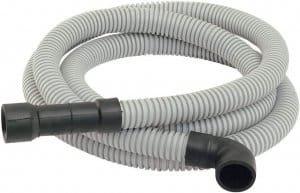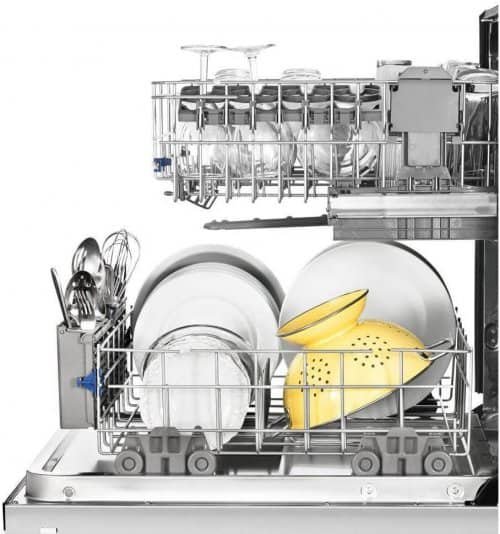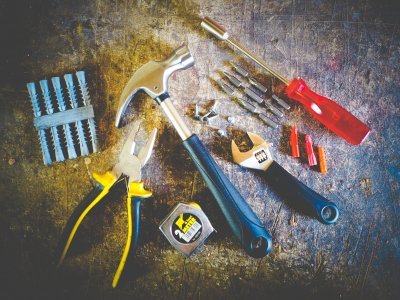A dishwasher is a convenient appliance that simplifies our daily lives by handling the tedious task of washing dishes. However, like any other machine, dishwashers can encounter problems over time. One common issue is a clogged or damaged drain hose, which can lead to improper drainage and a malfunctioning dishwasher. In this article, we will guide you through the process of fixing a dishwasher drain hose, ensuring that your dishwasher works efficiently once again.
Table of Contents
Understanding the Dishwasher Drain Hose
The dishwasher drain hose is responsible for carrying wastewater from the dishwasher to the drainage system. It is typically located at the back of the dishwasher and connected to the sink’s plumbing or garbage disposal unit. The drain hose must be clear and undamaged to ensure proper water flow and prevent leaks.
Signs of a Faulty Drain Hose
Before diving into the repair process, it is essential to identify if your dishwasher drain hose is indeed the culprit. Here are some common signs of a faulty drain hose:
- Standing water in the dishwasher after a cycle
- Slow drainage or water backing up in the sink
- Unpleasant odors coming from the dishwasher
- Visible cracks or leaks in the hose
- Noises or rattling sounds during the draining process
If you notice any of these signs, it’s likely that the dishwasher drain hose needs attention.
Preparing for the Repair
Before starting the repair, gather the necessary tools and materials:
- Screwdriver (Phillips or flathead)
- Pliers
- Replacement drain hose (if required)
- Towels or rags
- Bucket or shallow pan
- Safety gloves
Make sure to disconnect the dishwasher from the power supply and turn off the water supply to prevent any accidents during the repair process.

Steps to Fix a Dishwasher Drain Hose
- Step 1: Safety Precautions
- Step 2: Accessing the Drain Hose
- Step 3: Inspecting the Drain Hose
- Step 4: Clearing Clogs
- Step 5: Replacing the Drain Hose (if necessary)
- Step 6: Reassembling the Dishwasher
Step 1: Safety Precautions
Ensure your safety by wearing protective gloves and working in a well-ventilated area. It’s also crucial to disconnect the dishwasher from the power source before proceeding.
Step 2: Accessing the Drain Hose
Pull out the dishwasher gently to create space behind it. If the dishwasher is built-in or fixed, you may need to remove the kickplate at the bottom to access the drain hose. Use a screwdriver to unscrew and detach the kickplate.
Step 3: Inspecting the Drain Hose
Carefully examine the drain hose for any visible cracks, leaks, or clogs. If you notice any damage or blockage, it’s essential to address it accordingly.
Step 4: Clearing Clogs
If the drain hose is clogged, remove it from the dishwasher and sink connection. Use a combination of pliers and a wire hanger to carefully clear any debris or buildup obstructing the flow of water. Rinse the drain hose with warm water to ensure it’s thoroughly cleaned.
Step 5: Replacing the Drain Hose (if necessary)
If the drain hose is severely damaged and cannot be repaired, it’s advisable to replace it. Measure the length of the existing drain hose and purchase a suitable replacement from a hardware store or online retailer. Follow the manufacturer’s instructions to install the new drain hose correctly.
Step 6: Reassembling the Dishwasher
Once the drain hose is cleared or replaced, reattach it securely to both the dishwasher and the sink or garbage disposal unit. Double-check that all connections are tight to prevent leaks. Carefully slide the dishwasher back into its original position or reattach the kickplate if you had to remove it.
Testing the Repaired Dishwasher
Now that the repair is complete, it’s time to test your dishwasher. Reconnect the power supply and turn on the water. Run a test cycle to ensure the dishwasher drains properly without any leaks or unusual noises. Monitor the entire process to verify that everything is functioning as expected.
Preventive Maintenance Tips
To avoid future drain hose issues, consider these preventive maintenance tips:
- Regularly clean the dishwasher’s filter and remove any debris or food particles.
- Avoid overloading the dishwasher, as it can strain the drain hose.
- Use a dishwasher cleaner periodically to prevent mineral buildup.
- Be cautious about what you put in the dishwasher, as certain items can cause clogs.
By following these maintenance tips, you can prolong the lifespan of your dishwasher and minimize the risk of drain hose problems.
How often should I clean the dishwasher filter?
Ideally, you should clean the dishwasher filter once a month to prevent clogs and maintain optimal performance.
Can I use any replacement drain hose for my dishwasher?
It’s best to use a drain hose specifically designed for your dishwasher’s make and model to ensure compatibility and proper functionality.
Is it necessary to wear safety gloves during the repair process?
Wearing safety gloves is recommended to protect your hands from sharp edges and potential exposure to dirt or chemicals.
What can cause a dishwasher drain hose to clog?
Common causes of drain hose clogs include food particles, grease buildup, and mineral deposits.
Should I hire a professional for dishwasher repairs?
If you’re unsure about handling the repair yourself or if the problem persists after attempting the fix, it’s advisable to seek professional assistance.
Conclusion
Fixing a dishwasher drain hose is a manageable task that can save you time and money on professional repairs. By carefully inspecting and addressing any issues with the drain hose, you can ensure that your dishwasher operates smoothly, allowing you to enjoy clean and hassle-free dishwashing.



